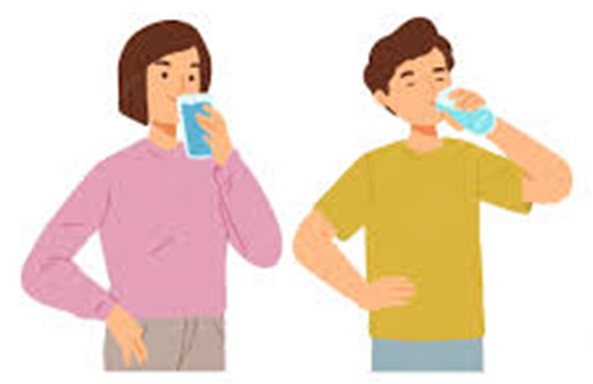A nurse is educating the parent of a school-age child about the importance of maintaining water intake to prevent dehydration. Which of the following food choices should the nurse recommend as containing the greatest percentage of water?
Almonds.
Cheddar cheese.
Whole-wheat bread.
Broccoli.
The Correct Answer is D
Choice A rationale:
Almonds do not contain a high percentage of water. They are a dry and crunchy snack with minimal water content, making them an inappropriate choice for maintaining hydration.
Choice B rationale:
Cheddar cheese is not a food with a high water content. It is a dairy product that has been processed and does not provide a significant source of water to help prevent dehydration.
Choice C rationale:
While whole-wheat bread may have some water content, it is not among the options with the greatest percentage of water. The moisture in bread is not as significant as in other options.
Choice D rationale:
Broccoli contains a substantial amount of water and is an excellent choice for maintaining hydration. It is a water-rich vegetable that can contribute to the body's water needs, making it a suitable recommendation for preventing dehydration.
Nursing Test Bank
Naxlex Comprehensive Predictor Exams
Related Questions
Correct Answer is D
Explanation
Choice A rationale:
Juvenile rheumatoid arthritis is not typically associated with complications of childhood obesity. Juvenile rheumatoid arthritis is an autoimmune disorder affecting the joints, and while obesity can contribute to joint stress, it's not a commonly taught complication of obesity.
Choice B rationale:
Type 1 diabetes mellitus is not directly related to childhood obesity. Type 1 diabetes is an autoimmune condition where the body's immune system attacks and destroys insulin-producing cells in the pancreas. Obesity is more commonly associated with type 2 diabetes, as it can lead to insulin resistance over time.
Choice C rationale:
Hypothyroidism is not a well-established complication of childhood obesity. Hypothyroidism is a condition where the thyroid gland doesn't produce enough thyroid hormone, leading to a slowed metabolism. While obesity can be influenced by thyroid function, it's not a primary complication taught in relation to childhood obesity.
Choice D rationale:
Hypertension is a well-recognized complication of childhood obesity. When a child is obese, the excess adipose tissue can lead to an increase in blood pressure due to increased work that the heart must perform to supply blood to the additional tissues. This can strain the cardiovascular system and potentially lead to hypertension, which is a major risk factor for heart disease and stroke. Childhood obesity can set the stage for long-term cardiovascular issues, making hypertension a key concern.
Correct Answer is D
Explanation
Choice A rationale:
The statement "Meal replacement shakes can cause weight gain" is incorrect. Meal replacement shakes are designed to provide controlled portions of nutrients and can be helpful for weight management when used appropriately.
Choice B rationale:
While having a substantial breakfast can be beneficial for weight management, there's no hard and fast rule that it should be the biggest meal of the day. The timing and distribution of meals can vary based on individual preferences and lifestyles.
Choice C rationale:
Setting a weight loss goal of 2.5 pounds per week might be too aggressive for most individuals. A safe and sustainable rate of weight loss is generally around 1-2 pounds per week. Rapid weight loss can lead to muscle loss and other health issues.
Choice D rationale:
"Make sure to drink water with your meals" is a valid statement. Drinking water with meals can help promote satiety and control portion sizes. Additionally, staying hydrated is essential for overall health and can support weight loss efforts by reducing the likelihood of mistaking thirst for hunger.

Whether you are a student looking to ace your exams or a practicing nurse seeking to enhance your expertise , our nursing education contents will empower you with the confidence and competence to make a difference in the lives of patients and become a respected leader in the healthcare field.
Visit Naxlex, invest in your future and unlock endless possibilities with our unparalleled nursing education contents today
Report Wrong Answer on the Current Question
Do you disagree with the answer? If yes, what is your expected answer? Explain.
Kindly be descriptive with the issue you are facing.
